For the most demanding pickup truck customers, the 2018 Ford F-Series Super Duty works harder…
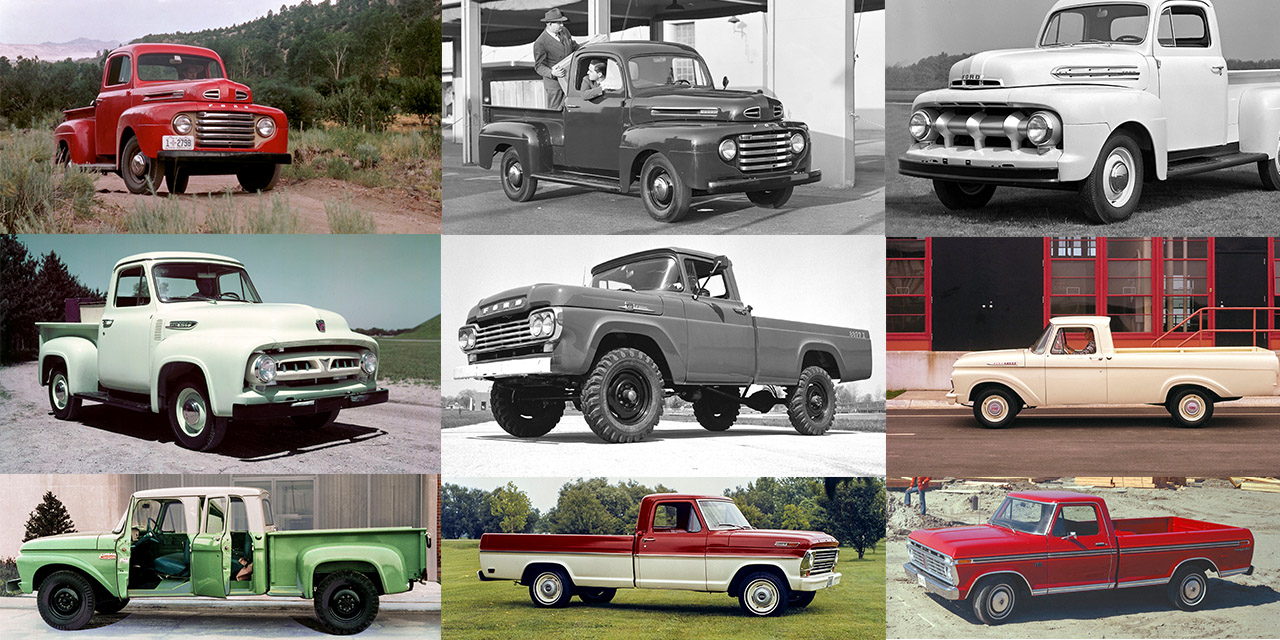
Ford F-Series History Part1
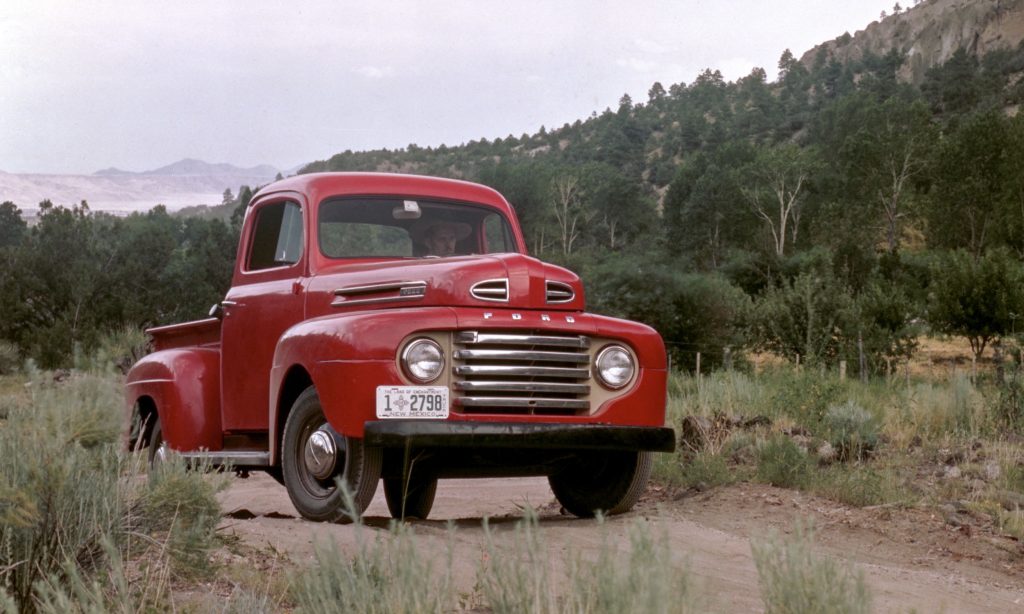
Ford F-Series: A Brief History
The Ford F-Series has been the best-selling truck in the U.S. for 45 consecutive years, as well as the top-selling vehicle overall for a total of 40 years — amazing winning streaks in any arena. In 1977 it became the best-selling truck in America, and in 1982 F-Series was so popular with buyers it became the top-selling vehicle in the U.S. — car or truck. Ford Motor Company continually improves and upgrades the iconic pickup to meet customer demands and competitor challenges. Now in its 14th generation, the F-Series has evolved into a high-tech machine that spans the spectrum from work truck to luxury transportation, and the next chapter begins as an all-electric F-150 Lightning premieres this year with shipments slated for spring 2022.

Early Ford Trucks
The third vehicle Henry Ford built was a truck, prior to founding the Ford Motor Company in 1903. The true roots of Ford light trucks extend back to commercial use of the Ford Model T car chassis, before Ford introduced the Model T One-Ton truck chassis in July 1917 (three years after the start of World War I). The Ford Model T Runabout with Pickup Body debuted in 1925 as the first factory-assembled pickup. It sold for $281. In 1928 Ford introduced pickups based on the Model A and Model AA chassis, and continued to build trucks until World War II when all Ford production switched over to support the military effort.
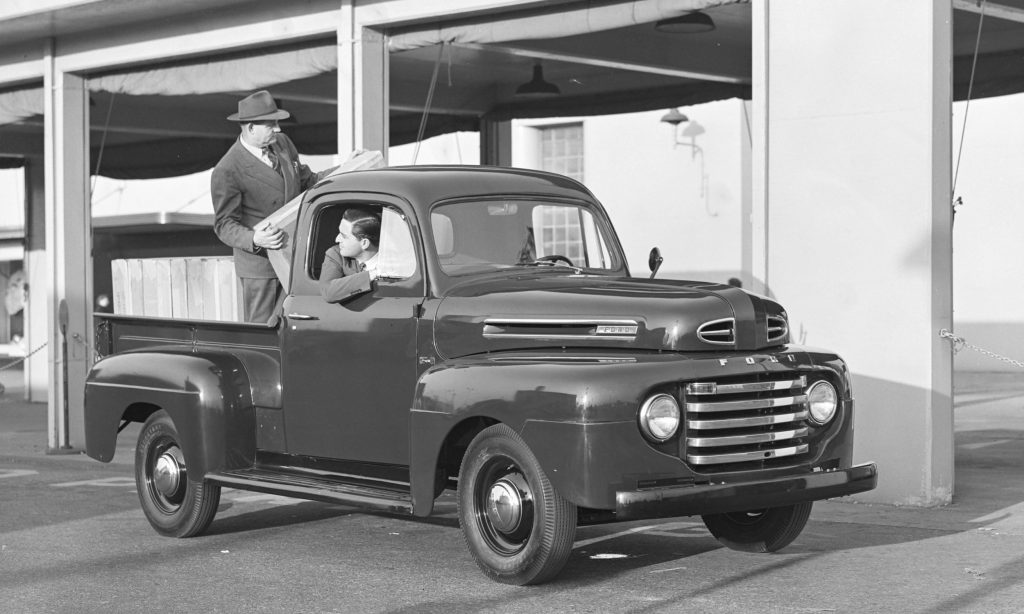
First Generation: 1948–1952
The Ford F-Series first debuted as a 1948 model — the first all-new postwar vehicle line for Ford, with a redesigned cab and a new front end. The new trucks were advertised as “Bonus Built” and offered three new engines, a more comfortable seat and a one-piece windshield. The F-Series was offered in a wide range of cab and chassis configurations, from the half-ton F-1 through the 3-ton F-8.
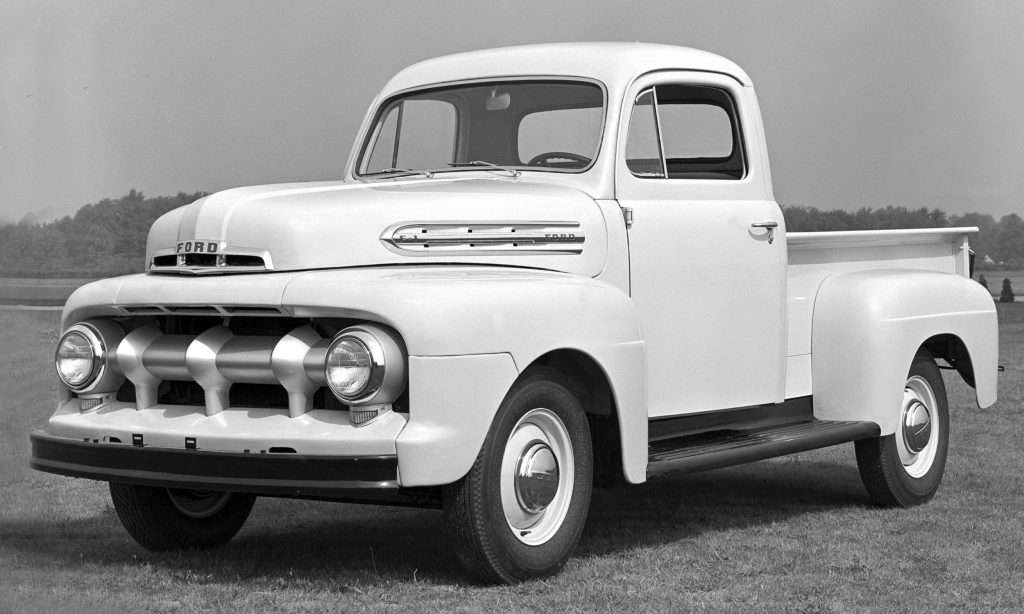
For the Fabulous Fifties, the 1951 Ford F-Series received a new front end design with new grille, front fenders and hood, and a larger rear window for better visibility. For 1952 Ford introduced a new 215-cubic inch overhead valve inline 6-cylinder engine to replace the previous flathead six.
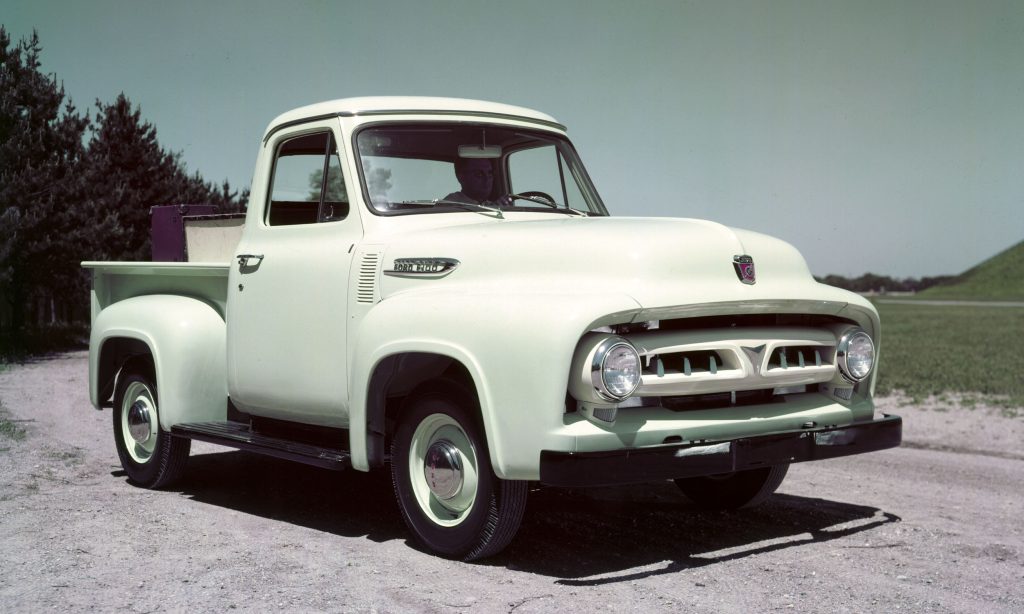
Second Generation: 1953–1956
Ford celebrated its 50th anniversary in 1953 and also introduced a redesigned F-Series. The F-100 replaced the F-1, and the F-250 replaced the F-2 and F-3 for 1953. The Blue Oval offered an automatic transmission in the F-Series as an option, and 1953 was the last year for the Ford flathead V8 engine first introduced in 1932.

Third Generation: 1957–1960
The 1957 F-Series features a square, more modern design with flush front fenders and the option of either Flareside rear fenders with a narrow bed and traditional fenders or a Styleside design with flush-mounted straight fenders.
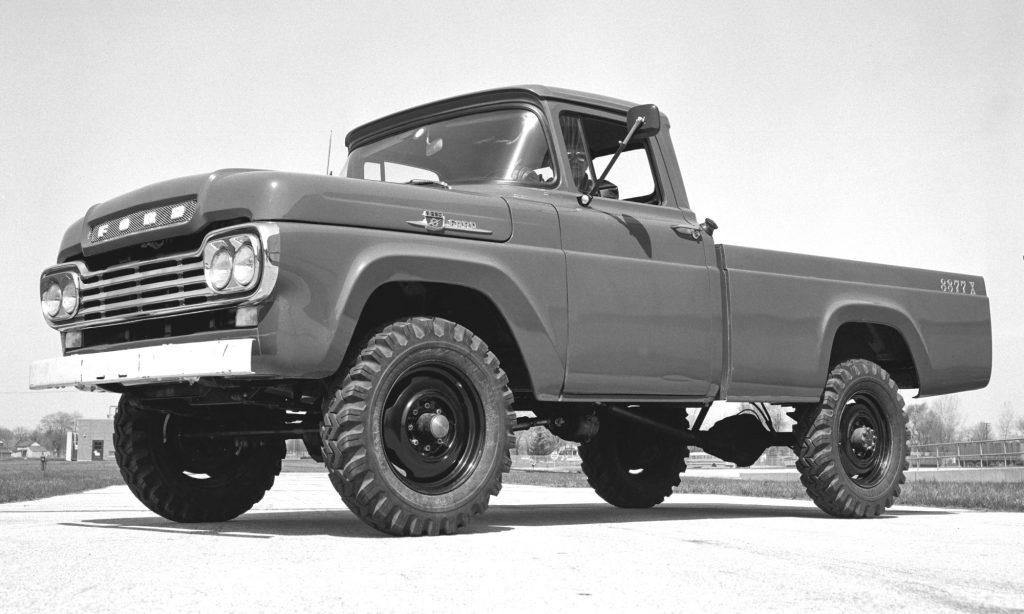
For 1959 Ford offered 4-wheel drive as an option on both the F-100 and the F-250 model lines. Although aftermarket conversions had been previously available, it was the first time that 4WD was optional on Ford’s light-duty trucks. The company added the feature due to increased public interest in recreational off-roading, when the American pickup was in transition from work truck to more personal, everyday use.
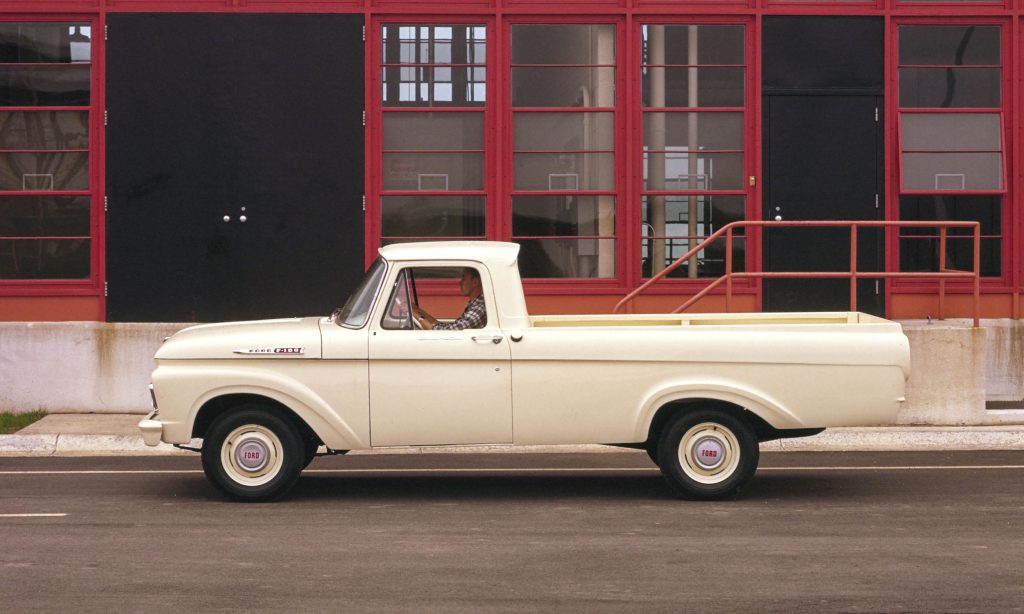
Fourth Generation: 1961–1966
The F-Series was redesigned for 1961 with a new cab and front sheet metal. The F-Series Styleside has an integrated cab and box design, but a more traditional Flareside continued to be offered. For 1962, 4-wheel-drive models with the Styleside design offered a separate box and cab, and by mid-year the separate box was available on 2-wheel-drive models as well. The integrated Styleside design was dropped after the 1963 model year.

Ford introduced the Twin I-Beam front suspension with coil springs in 1965 for 2-wheel-drive versions of the F-100 and F-250. The new suspension offered a softer ride and better handling, and Ford advertised the Twin I-Beam as allowing the F-Series to “drive like a car — work like a truck.” Ford estimated that two-thirds of pickup owners used their trucks for recreational and personal use, so it introduced the Camper Special package for F-100 and F-250. In 1965 Ford also offered a factory-built 4-door crew cab F-250 for the first time.

Fifth Generation: 1967–1972
Redesigned for 1967 with an increased focus on interior comfort and luxury, the F-Series added a padded dash, padded sun visors and shoulder-mounted belts. For 1968 federal regulations required side marker lights or reflectors for the front and rear fenders, and two new V8 engines were offered with displacement of either 360 or 390 cubic inches. The Ranger XLT joined the 1970 F-Series lineup as the top trim level.
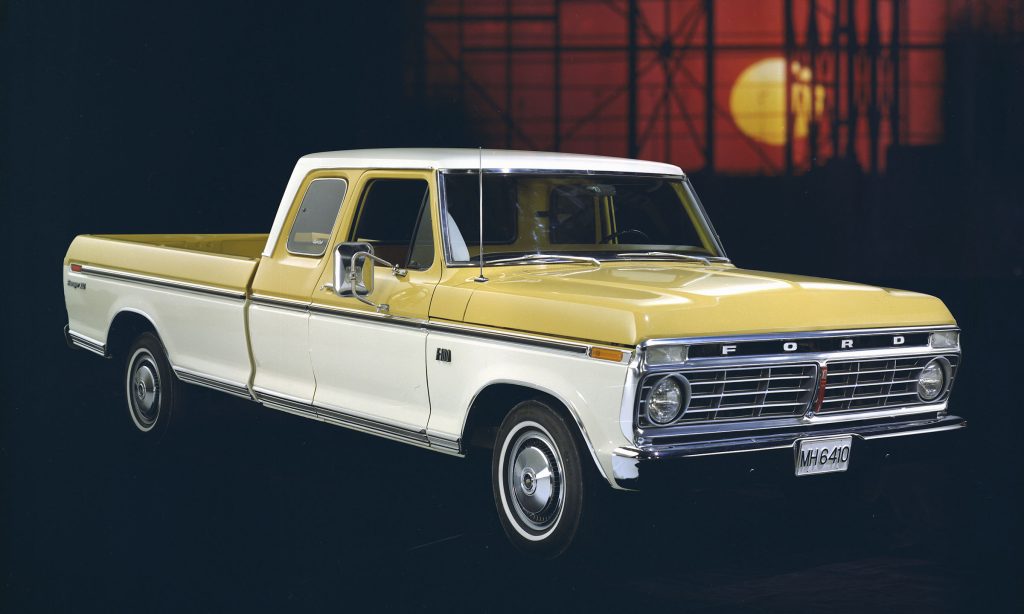
Sixth Generation: 1973–1979
The sixth iteration of the F-Series rolled out for the 1973 model year with new grilles that incorporated FORD across the top, below the hood. The biggest change of gen six came in 1974 when the first extended-cab SuperCab appeared for F-100 through F-350 models. The SuperCab offered either center-facing jump seats or a front-facing bench seat that could be folded up when not in use. The SuperCab was only available with 2-wheel drive; full-time 4-wheel drive was added as an option for F-100 and F-250.
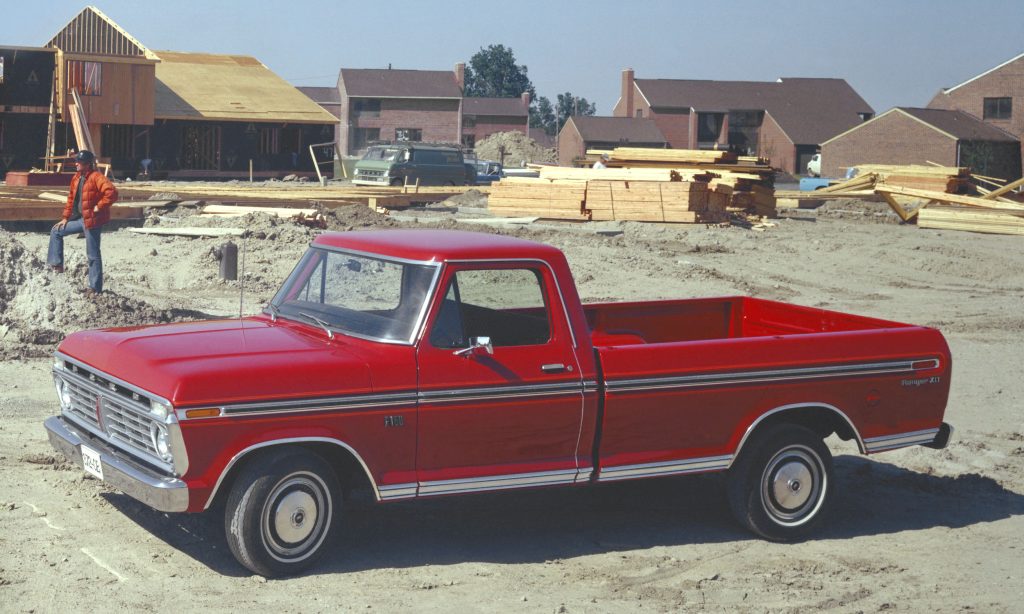
In 1975 Ford created the F-150 as a heavy-duty version of the F-100 with heavier springs and increased payload capacity; it was only offered with 2-wheel drive. The introduction of the F-150 was not extremely significant at the time, but it would eventually go on to replace the F-100 as Ford’s base-model full-size pickup and best-selling truck model.
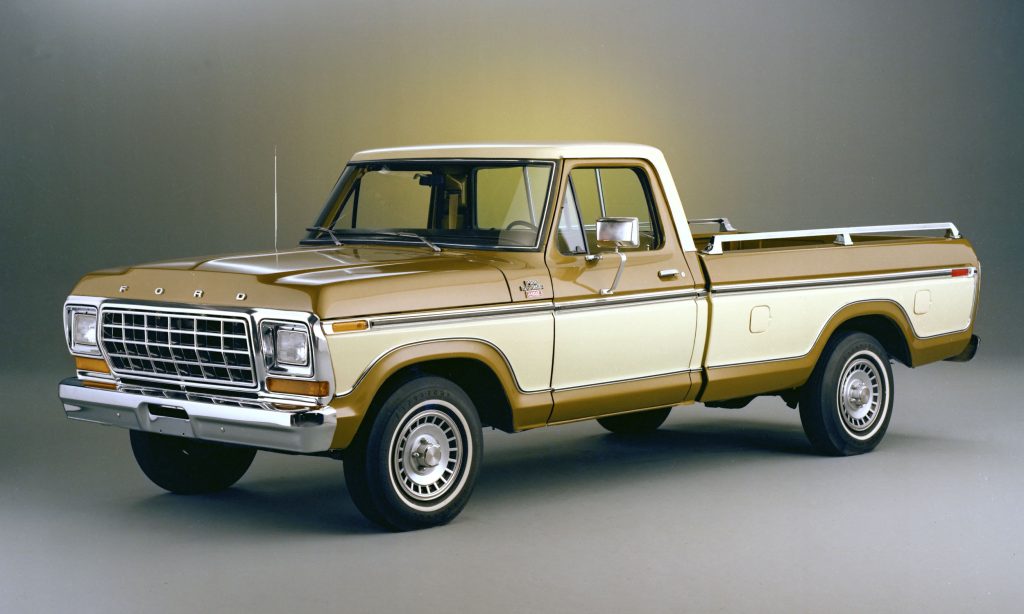
In an effort to spruce up the aging sixth-gen truck prior to the release of the next version, Ford added a new grille for 1978 featuring rectangular headlights for the top trim levels. The new luxury Lariat trim was added as well. For 1979 all trim levels included rectangular headlights, and the Ranger Lariat had optional two-tone paint.


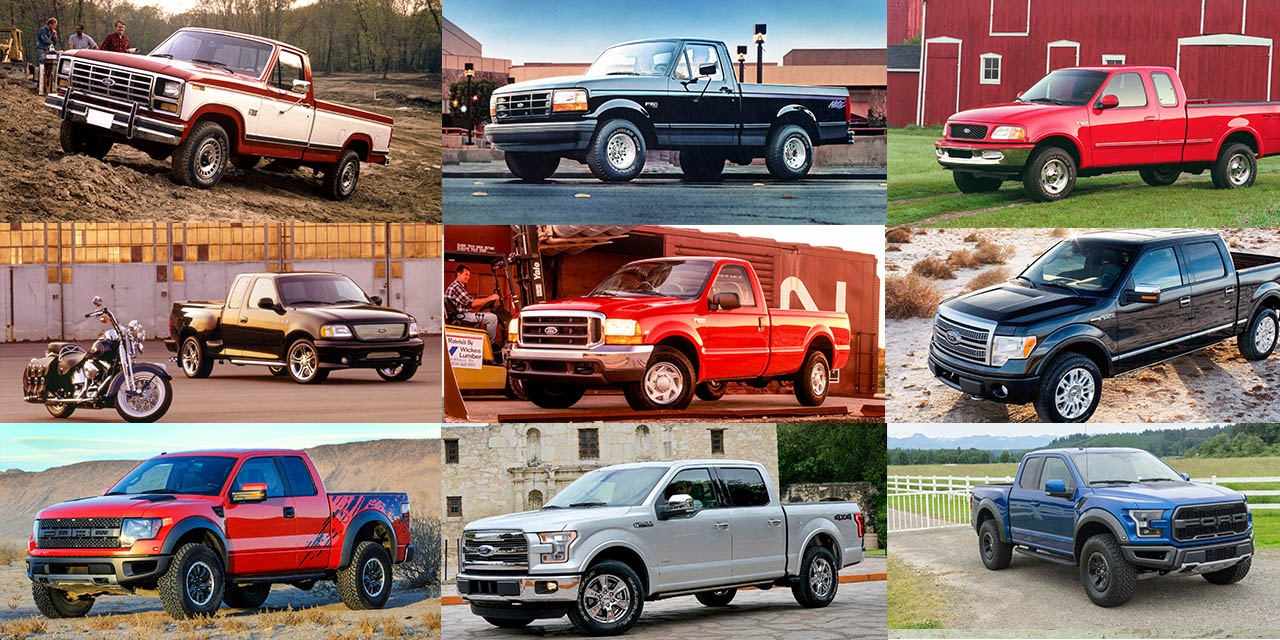
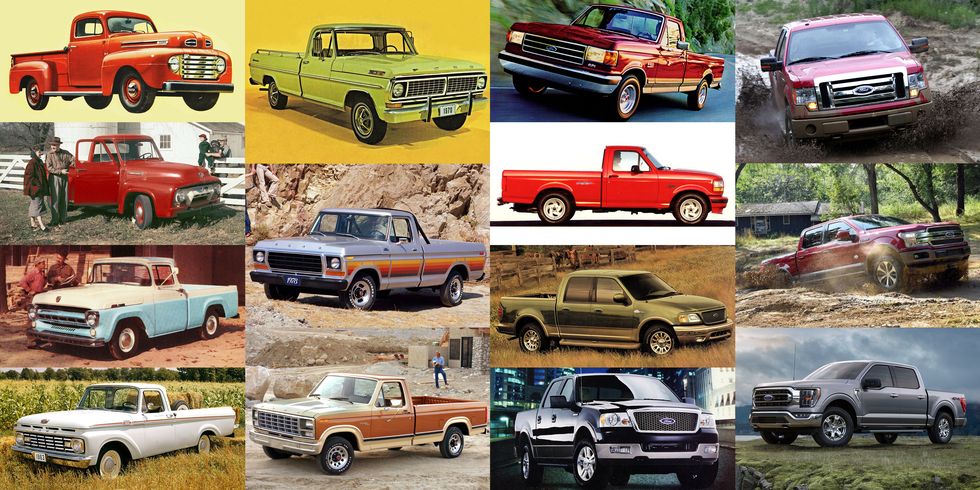
This Post Has 0 Comments